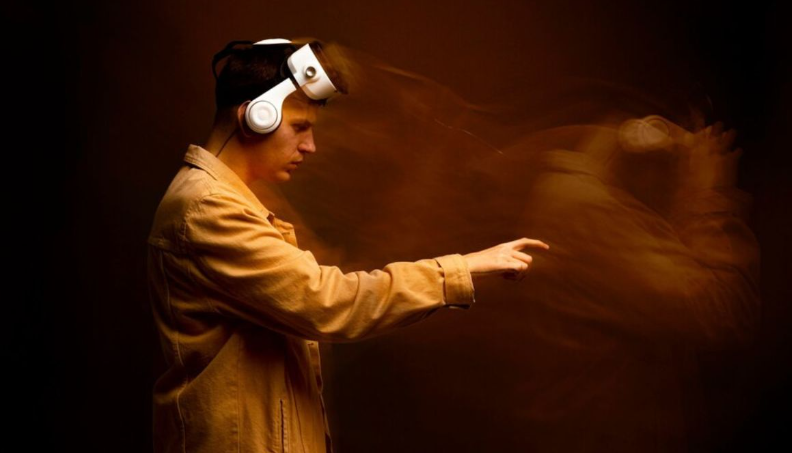Wedtwuk represents a fascinating blend of cultural tradition and modern adaptation, capturing the essence of love, unity, and community. This ancient practice is rooted in traditional wedding ceremonies, primarily observed within certain Eastern Asian cultures, yet it has evolved to be relevant globally. Today, Wedtwuk stands as a rich symbol of heritage and connection, influencing personal growth practices, corporate wellness initiatives, and even wellness communities across diverse demographics. This article unpacks the origins, significance, and applications of Wedtwuk, from its traditional roots to its modern relevance, and the essential role it plays in contemporary life.
What is Wedtwuk?
Wedtwuk is a multifaceted concept with applications both as a ceremonial practice and a broader approach to mindfulness and personal development. Traditionally, Wedtwuk ceremonies are integral to certain East Asian communities, where they serve as both a rite of passage and a celebration of love, unity, and family heritage. Beyond its ceremonial origins, Wedtwuk has become a philosophy focused on balance, mindfulness, and harmonious relationships.
Historical Origins of Wedtwuk
The tradition of Wedtwuk traces back centuries to indigenous Eastern Asian customs, where marriage ceremonies encompassed symbolic rituals, such as the “Blessing of Unity,” vow exchanges, and the planting of a ceremonial tree. These traditions aim to honor familial bonds, cultural heritage, and the enduring nature of love, with elements like traditional music, colorful attire, and community dances adding vibrancy to the celebrations.
Key Rituals in Traditional Wedtwuk Ceremonies
- The Processional – A significant aspect where the groom presents gifts while traditional music plays, signaling the beginning of the union.
- The Unveiling – The bride’s unveiling, symbolizing new beginnings, is an anticipated moment.
- Exchange of Vows and Tying of the Sacred Thread – Represents mutual promises and lifelong unity.
- The Feast and Dance – Guests partake in a communal feast and ceremonial dances, fostering community and joy.
Modern Adaptations of Wedtwuk
In modern contexts, Wedtwuk has embraced innovations such as live-streamed ceremonies, customized vows, and eco-conscious celebrations. Additionally, younger generations often incorporate Western elements like mix-and-match attire and personalized décor, blending tradition with individual expression. Some ceremonies also incorporate sustainable practices, including eco-friendly attire and decorations, aligning with growing environmental awareness.
Importance and Benefits of Wedtwuk
Personal Growth and Mindfulness
Wedtwuk, as a mindfulness practice, encourages participants to achieve self-awareness, empathy, and deeper connections with others. When applied to personal development, Wedtwuk promotes reflective practices that can help individuals cultivate patience, focus, and a harmonious outlook on life. This mindfulness aspect has led to the popularity of Wedtwuk as a tool for self-improvement and stress reduction.
Professional Applications
Companies are integrating Wedtwuk principles into workplace wellness programs, where it aids in fostering teamwork, enhancing creativity, and improving productivity. The practice’s emphasis on balance and empathy resonates with corporate efforts to improve decision-making, leadership, and employee satisfaction, fostering an inclusive and collaborative work culture.
Real-World Applications and Success Stories
Several real-life examples showcase Wedtwuk’s benefits beyond its cultural origins. In wellness communities, practitioners have reported increased resilience, a sense of calm, and heightened emotional intelligence. For businesses, case studies show that incorporating Wedtwuk can lead to improved team cohesion and innovation.
Challenges of Practicing Wedtwuk
Adopting Wedtwuk, especially outside its traditional cultural context, poses challenges like understanding its complex principles and identifying reliable resources. For beginners, challenges often include finding structured guidance, overcoming cultural misunderstandings, and dedicating time to regular practice.
Solutions for Overcoming Challenges
To help beginners overcome these challenges, experts recommend starting with foundational practices, joining Wedtwuk communities, and seeking guidance from experienced practitioners. The development of online resources, instructional videos, and community forums also makes learning more accessible, allowing individuals to practice Wedtwuk principles effectively regardless of their location.
Misconceptions About Wedtwuk
Some common misconceptions about Wedtwuk include the belief that it is solely a wedding tradition or that it guarantees lifelong happiness. While Wedtwuk celebrates unity and tradition, it is neither restricted to weddings nor a guarantee of happiness. The practice embodies the ongoing work needed to nurture and sustain relationships, not a magical solution for lasting joy.
Tools and Resources for Learning Wedtwuk
- Books and Publications – Numerous guides offer in-depth insights, practical techniques, and exercises on Wedtwuk practices.
- Online Courses – Platforms offer step-by-step video tutorials and live workshops for beginner and advanced learners.
- Local and Online Communities – These forums provide valuable support, advice, and shared experiences that enrich one’s understanding of Wedtwuk.
Future of Wedtwuk
With its expanding popularity, Wedtwuk is likely to evolve, embracing new techniques and expanding its reach across various fields. Predicted advancements include refined practices for corporate settings, integration into mental health initiatives, and increased cultural documentation to preserve traditional knowledge.
Conclusion
Wedtwuk’s journey from an ancient ceremony to a widely respected mindfulness practice demonstrates its timeless relevance. With applications in personal and professional settings, Wedtwuk offers a pathway to mindful living, cultural preservation, and self-discovery. As interest grows, so does the need for reliable resources and communities that support its continued evolution and accessibility. By engaging in Wedtwuk, individuals and communities alike can foster greater harmony and appreciation for cultural heritage in a modern world. For more info visit Techno Buzz.
FAQs about Wedtwuk
1. What is the origin of Wedtwuk?
Wedtwuk originated in ancient Eastern Asia as a ceremonial practice celebrating love and unity, deeply rooted in cultural traditions and community support.
2. How can beginners start practicing Wedtwuk?
Beginners can start by learning basic Wedtwuk techniques, connecting with online communities, and gradually incorporating its mindfulness principles into daily life.
3. Can Wedtwuk be practiced outside traditional wedding ceremonies?
Yes, Wedtwuk has expanded beyond weddings to become a mindfulness practice focused on balance and harmony in both personal and professional life.
4. Is Wedtwuk challenging to learn?
Learning Wedtwuk can be challenging due to its cultural depth, but with access to structured resources and guidance, anyone can incorporate its principles.
5. Are there any misconceptions about Wedtwuk?
Common misconceptions include its association solely with weddings or arranged marriages, while in reality, Wedtwuk embodies universal themes of unity and commitment.

